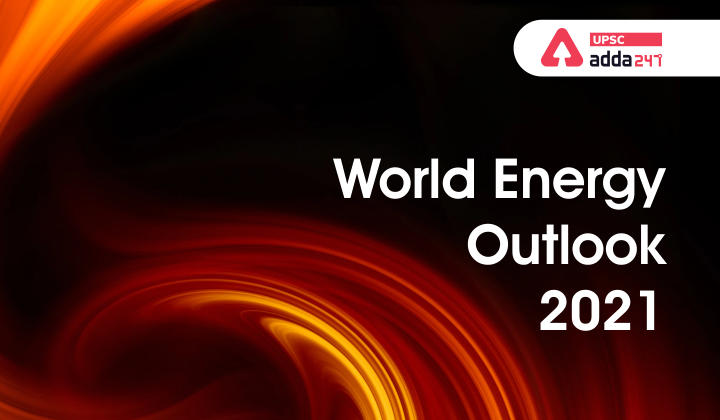Table of Contents
World Energy Outlook 2021: Relevance
- GS 3: Infrastructure: Energy, Ports, Roads, Airports, Railways etc.
World Energy Outlook 2021: Context
- Recently, International Energy Agency (IEA) has launched World Energy Outlook 2021 where it provides a detailed picture of how far countries have come in their clean energy transitions, and how far they still have to go.
World Energy Outlook 2021: Four key areas
- Actions in four key areas over the next decade are essential to keep the door to a 1.5 °C stabilisation open
- a massive push for clean electrification;
- a renewed focus on realising the full potential of energy efficiency;
- concerted efforts to prevent leaks from fossil fuel operations; and
- a boost to clean energy innovation.
Status Renewable Energy in India
World Energy Outlook 2021: COVID impact
- Many emerging market and developing economies face a continued public health crisis from Covid-19.
- Moreover, the pandemic has set back efforts to improve access to electricity and clean cooking fuels.
- Also, funds for sustainable recovery are scarce and capital remains up to seven-times more expensive than in advanced economies.
India-US Clean Energy Agenda 2030 Partnership
World Energy Outlook 2021: What are STEPS?
- Stated Policies Scenario (STEPS) reflects current policy settings based on a sector-by-sector assessment of the specific policies that are in place, as well as those that have been announced by governments around the world.
Renewable Energy Land Use in India
World Energy Outlook 2021: Key findings
- A new global energy economy is emerging, but will need to take shape much more quickly to avoid severe impacts from a changing climate.
International Atomic Energy Agency (IAEA)
Fossil fuel
- The aggregate fossil fuel demand would slow to a plateau in the 2030s and then fall slightly by 2050.
- It is the first time that such projection has been made in this scenario.
Global temperature
- The global average temperature rise in the present scenario passes the 1.5°C mark around 2030 and would still be climbing as it reaches 6 °C in 2100.
- If the announced net zero pledges and enhanced Nationally Determined Contributions (NDCs) are implemented fully, the temperature rise will be down to 2.1°C in 2100.
- However, a much greater global effort will be essential to reach the relative safety of the Net Zero Emissions by 2050.
Natural gas
- Natural gas demand is around 10% lower in 2050 than in the WEO-2020 STEPS.
- It reflects lower projected consumption in the power and industry sectors in emerging market and developing economies in Asia.
Oil
- Oil demand starts to decline in the 2030s for the first time in the STEPS as a result of more muted growth in petrochemicals and faster reductions elsewhere.
Coal
- Coal use rebounds more rapidly in the near term and stays above last year’s projections until around 2030, but its subsequent decline is faster than projected in 2020 (and much faster than projected five years ago).



 TSPSC Group 1 Question Paper 2024, Downl...
TSPSC Group 1 Question Paper 2024, Downl...
 TSPSC Group 1 Answer key 2024 Out, Downl...
TSPSC Group 1 Answer key 2024 Out, Downl...
 Cabinet Ministers of India 2024, New Cab...
Cabinet Ministers of India 2024, New Cab...







